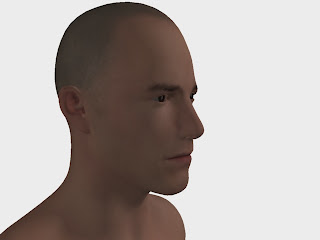Sorry the video's not the best, all I had was CamStudio, but below are all the instructions needed to demo on my lab computer
Actual file hosted on website (815MB): http://
To Demo shader as seen in video:
In python script line type "import shader"
Add the appropriate files (C:\Kaitlin\SeniorProject\
Choose "Create Shader" -> shader created with name "skinOver"
Apply to object -> Right Click -> Apply Existing Material -> skinOver
If you added displacement this can be adjusted (no error checking at this point, so if no displacement file was selected please don't click)
To apply exhaustion progression -> Exhaust
Images for Color, Epidermal, Subdermal, Backscatter will be shown if selected
3 clicks, choose eyes and mouth -> hit Enter -> there will be a rather long wait as the files are generated
Repeat for remaining file that pop up
File ready (for demo purposes only every 10th frame created, so please view 0,10,20,etc -> 490)
To Demo sweating
Open Maya
Select faces that you want to define the surface emitter
In python script line type "import sweat"
Wait
Hit Play
Code:
C:\test
C:\Users\Kaitlin\Documents\
Files:
C:\Kaitlin\SeniorProject


























